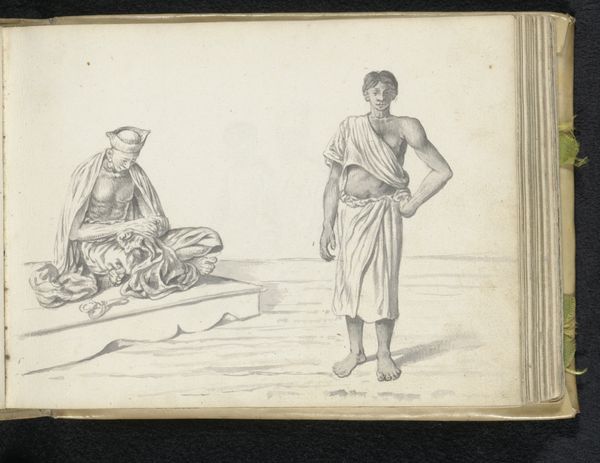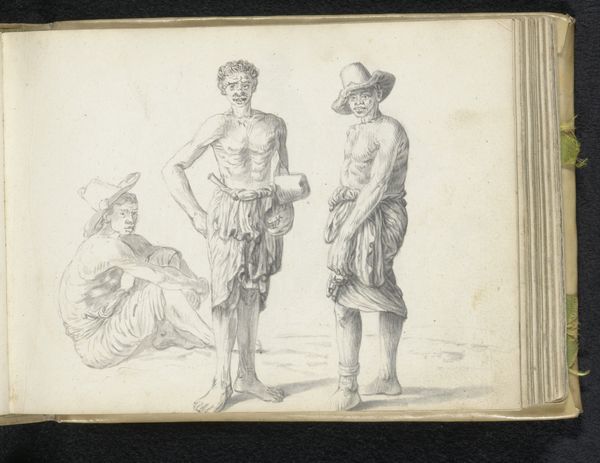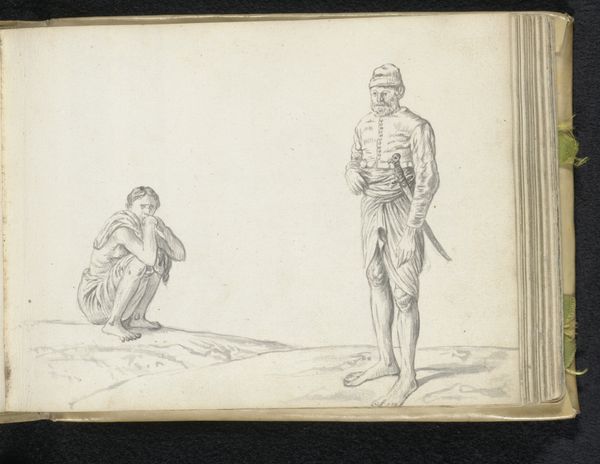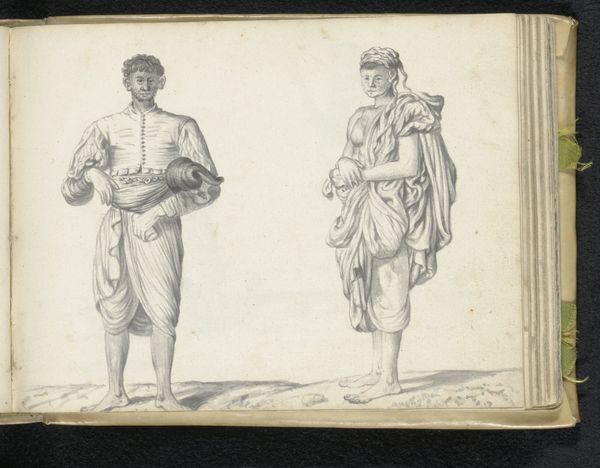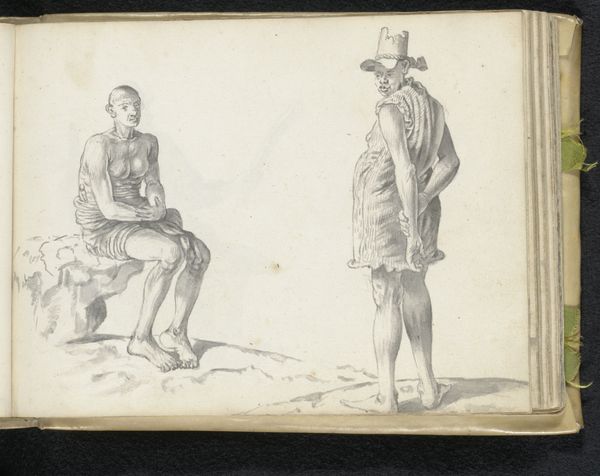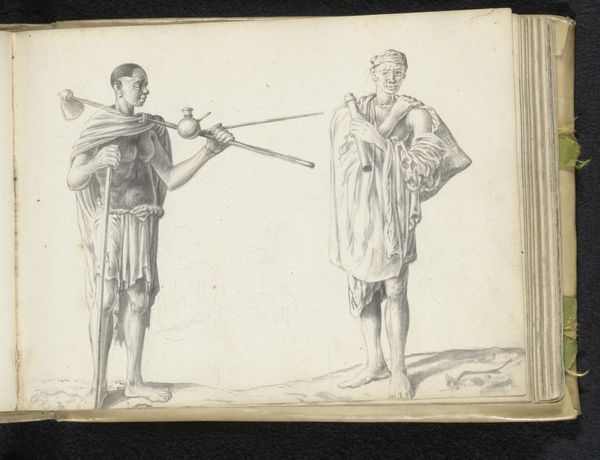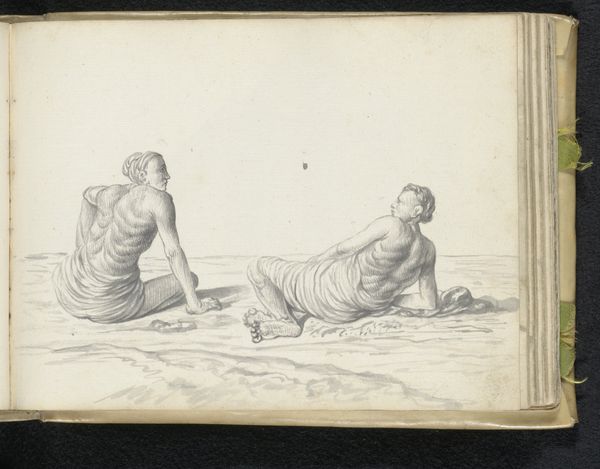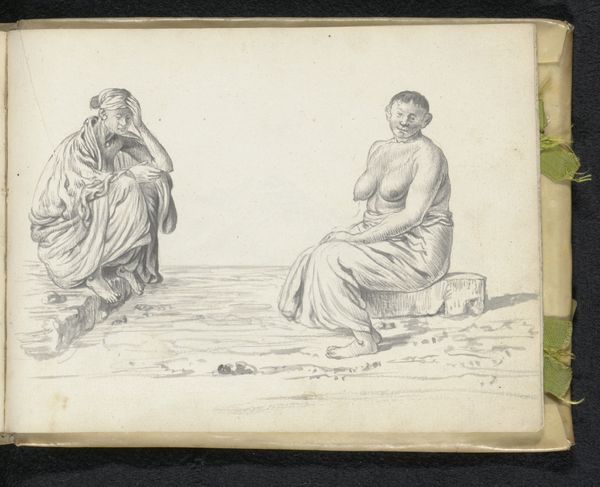
drawing, pencil
#
portrait
#
drawing
#
narrative-art
#
dutch-golden-age
#
figuration
#
coloured pencil
#
pencil
#
genre-painting
Dimensions: height 148 mm, width 196 mm
Copyright: Rijks Museum: Open Domain
Esaias Boursse created this drawing of a ‘Handicapped beggar in a cart and his mate’ with graphite. During the 17th century, the Dutch Golden Age, the Dutch East India Company expanded its presence in the East, leading to increased interactions with diverse cultures and peoples. Boursse himself worked for the Dutch East India Company and his drawings often capture scenes and figures encountered during his travels. The drawing portrays a man in a rudimentary cart being pulled by another. What is their relationship? Are they family? Friends? Or is this a relationship born out of necessity and economic disparity? The image invites us to reflect on themes of dependency, labor, and human dignity. How are we to understand the dynamic between these two men and the racial power dynamics at play during this time? It prompts us to consider the ethics of representation, and our own emotional responses to images of vulnerability and resilience.
Comments
No comments
Be the first to comment and join the conversation on the ultimate creative platform.
